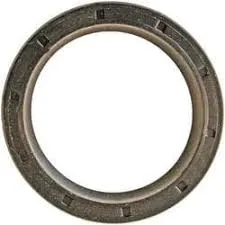When choosing a type of oil seal, it is important to consider factors such as environment, shaft speed and pressure of your machine, temperature, and the type of materials the seal will interact with during use. These considerations will ensure that you choose a compatible oil seal for your particular machinery and help you select the right color, size, and lip material or sealing element.
NBR, also known as nitrile rubber or nitrile, is the most popular material for an oil seal because of its good resistance to many oils and greases, such as mineral grease and hydraulic oil. Depending on their composition, synthetic oils and greases, such as those based on glycol, can damage NBR rubber materials. Depending on the amount of glycol, a PTFE lip seal may be the best choice. NBR is also unable to cope with contact with acids and solvents. The rubber is suitable for oil and grease at temperatures from -35 °C to 100 °C.
- The primary function of a head gasket is to prevent the mixing of coolant and oil with the combustion chamber's high-pressure gases. It also maintains the necessary compression ratio, which is crucial for the engine's ability to generate power. Without a head gasket, the engine would suffer from leaks, leading to a decrease in efficiency, overheating, and potentially catastrophic failure.
Operating conditions such as the engine’s temperature, position, size, pressure and shaft speed largely determine which individual oil seal composition is most suitable for every individual application.
EPDM oil seals are less common. They are used in solvent, hot water and steam applications, EPDM resists low temperatures down to -50 °C and UV radiation well. Some types of EPDM are also suitable for higher temperatures up to +150 °C. EPDM oil seals are usually available upon request.

Application Industry

locking gasket. This helps prevent damage and prolong the life of the equipment, ultimately saving manufacturers time and money.

